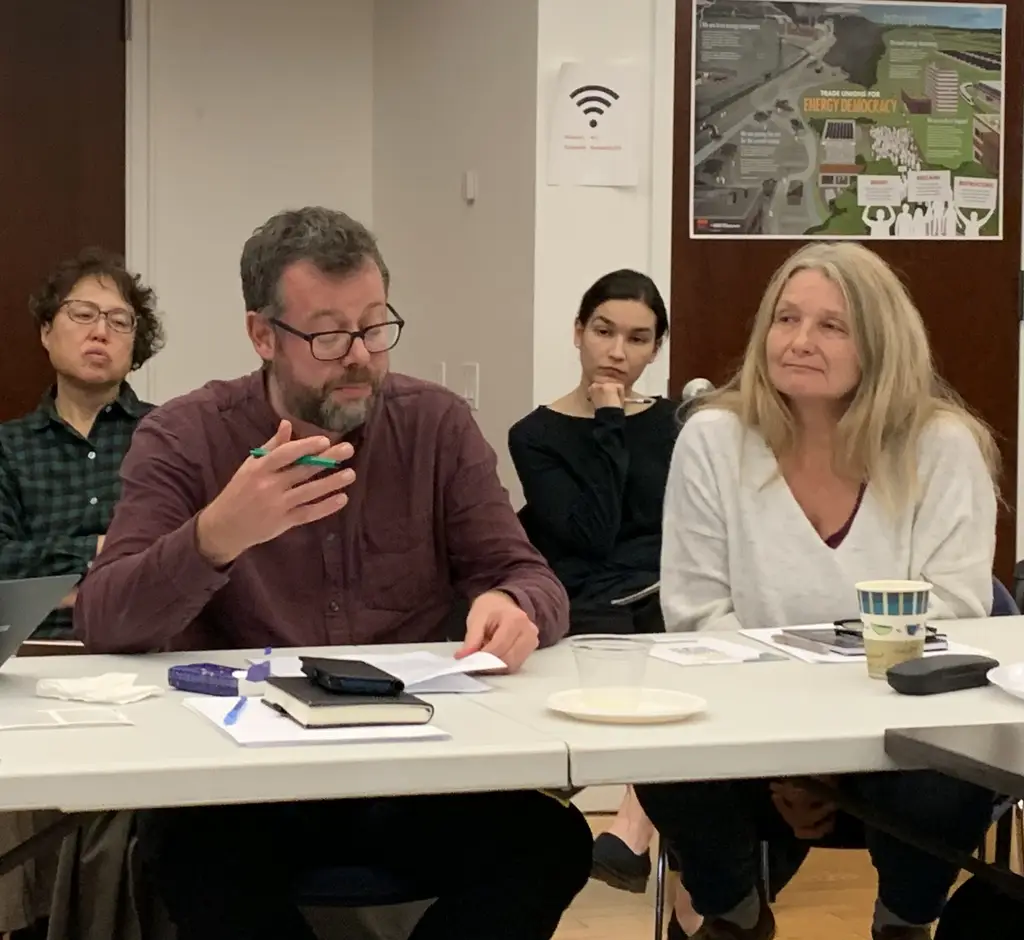The return of US nuclear bombs to the UK was announced without fanfare and without any discussion, debate, deliberation or the opportunity for dissent within Britain’s democratic institutions.
There was no official announcement from the British government. No ministerial statement to Parliament.
When the British government was asked about this development it gave the following non-reply:
“The government is unable to comment on US spending decisions and capabilities, which are a matter for the US. It remains longstanding policy to neither confirm nor deny the presence of nuclear weapons at a given location.”
The British government has maintained this position.
News of this development emerged only after Hans Kristensen, from the Federation of American Scientists, noted the addition of the UK to the list of nuclear storage sites to be upgraded under NATO’s $384 million infrastructure investment programme. In the 2022 US Department of Defense budget, storage sites in Belgium, Germany, Italy, the Netherlands and Turkey were listed. In the 2023 budget, the UK was added to the list.
Nuclear developments have almost always operated under a veil of secrecy. For instance, Britain’s atomic programme was conducted in secret, with not even the then-Cabinet being notified. More recently, the current government announced in its Integrated Review that it would “no longer give public figures for our operational stockpile, deployed warhead or deployed missile numbers”: a reversal of recent policy and connected to plans to increase the warhead threshold for the first time in decades.
Secrecy extends to the arrangements under which the United States stations nuclear bombs elsewhere in Europe.
When asked about the possibility of further US nuclear weapons coming to Europe under NATO auspices, NATO Secretary General Jens Stoltenberg said – in December 2021 – “we have no plans of stationing any nuclear weapons in any other countries than we already have these nuclear weapons as part of our deterrence and that … have been there for many years.”
Stoltenberg’s comments have been interpreted as meaning that although Lakenheath’s nuclear storage facilities are to be updated, the stationing of US nuclear bombs has been ruled out. I do not think this makes very much sense. I would interpret Stoltenberg’s comments another way. Throughout, he is speaking as the head of NATO. When he says “we” and “our”, he is talking about the nuclear-armed alliance. In this context it is worth noting that the UK’s nuclear weapons are counted as part of NATO’s ‘nuclear capabilities’ and have been for “many years”. This response from Stoltenberg is typical of the prevalent opacity when it comes to nuclear questions.
The Lakenheath base was the place where the US Air Force previously stored nuclear gravity bombs. By the early 2000s, 110 B61 bombs were stored there and US F-15E aircraft were stationed there for the purpose of dropping these bombs on command of the President of the United States.
These bombs were removed in the later 2000’s and it was only in 2008 that their total removal was confirmed. For the first time since 1954, the United States did not store nuclear bombs in the United Kingdom.
It had already been announced that Lakenheath was to become the first location in Europe for the new US Air Force nuclear-capable F35 fighter-bombers. These arrived in December 2021. 24 of them are stationed at the base and the US Air Force is scheduled to commence training for the use of the new generation of guided nuclear bombs, the B61-12’s in the coming year. These bombs look set for shipping to Europe in 2023 where they will replace the B61-3 and 4’s already stationed.
So, it looks almost certain that the US intends to station nuclear bombs in the UK again. This is a major development and one that should be taken very seriously indeed.
Even without the massively increased nuclear tensions that have been developing over the past few years, our opposition would be sharp.
The US has an extensive military presence in England, at something in the order of 17 different locations. These range from spy bases – like the US National Security Agency base at Menwith Hill – to drone bases – like RAF Digby – to the home of the US’s only heavy bomber airfield in Europe at Fairford. The British government likes to boast of the “special relationship” with the United States. We can see what this relationship amounts to.
We know that even in the most stable of times, increasing the US’s nuclear bootprint would create instability. We are not living through particularly stable times.
We know that regardless of other circumstances, a nuclear storage site and an airbase for nuclear capable bombers becomes a target for a nuclear strike. We know that every new nuclear development brings with it new risks, new dangers and new threats in local, regional, national and international contexts.
But the prospect of deployment of US nuclear bombs at Lakenheath is not the only ‘nuclear development’. The UK claims to have an ‘independent nuclear capability’. It is no such thing as it relies heavily on US technology – from guidance systems to design – and US cooperation. The Boris Johnson government’s Integrated Review of early 2021 announced two things of special note: plans to increase the nuclear warhead stockpile from 195 to 260 – and to ‘reduce nuclear transparency’ – another explicit move against the spirit of the NPT, for instance, that the British government claims is the “cornerstone” of disarmament policy.
Will the UK, USA and Australia be held to account for their new military alliance, AUKUS, which looks set to facilitate the transfer of weapons-grade nuclear material to non-nuclear Australia in the form of nuclear reactors aboard attack submarines? Quite apart from the question of who or what these new attack submarines as supposed to attack – and the destabilising implications that go along with it – is the fact that nuclear technology for military purposes is now spreading. With the spread of nuclear technology comes the spread of danger and the spread of nuclear waste. Under the AUKUS agreement, Australia is responsible for processing and story any nuclear waste.
None of the developments in the UK can be separated from the global picture. They cannot be separated from US policy priorities, and they cannot be separated from NATO’s posture. They relate directly to the broader dynamics of European re-militarisation – a process underway before Russia’s invasion of Ukraine – and to the so-called ‘tilt to Asia’ instigated by the Obama administration.
The ’bonfire of treaties’ ignited by George Bush Jnr when he scrapped the Anti-Ballistic Missile Treaty in 2002 and fuelled by Trump’s hand in scuppering the Intermediate-range Nuclear Forces Treaty and the Iran Deal, did enormous damage to the system of treaties and diplomatic measures designed to regulate nuclear weapons. There is now something approaching a free-for-all. Rather than re-institute any of these agreements or put efforts into new diplomacy, new negotiations and serious talks those who parade themselves as paragons of the ‘democratic rules-based order’ are taking reckless and potentially deadly measures.
Where does all this point: yes, towards the increased and urgent need for lively and well coordinated national action. It also points towards the pressing need for greater transnational – regional and international – cooperation and joint work. If the TPNW can be thought of as an insurgent “NO” from the non-nuclear states to the nuclear-armed states then we – activists and organisers in the nuclear-armed states and in those that are members of nuclear-armed alliances – must coordinate our own insurgent “NO”!

